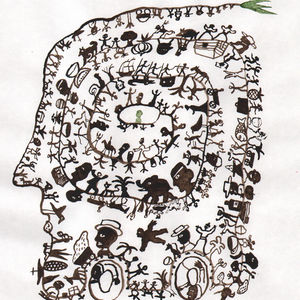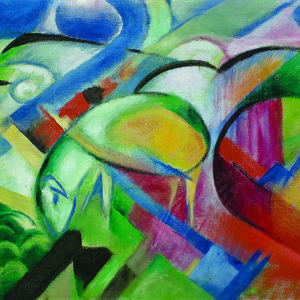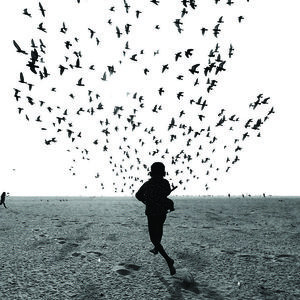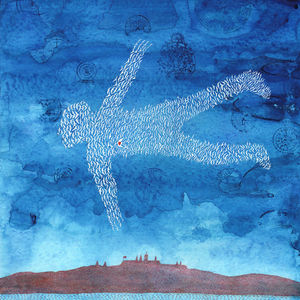- Doing Good
- Goodness Gracious
- Pain Relievers
- Call It Human Nature
- Storylines
- The Sickness Swing
- The Sound of Sublime
- Moving Pictures
- Body Language
- A Quiet Incarnation
- Giving Upward
- Dauntless Luminescence
- The Shining Joy of Falling Flat on Your Face
It begins with the simplest of melodies: an austere and majestic D / A / F / D / C-sharp / D / E / F, before ascending with a quick flourish back to D. Out of the ethereal delicacy of those eight notes and the triplet that follows, which contain the tensile strength of coiled steel, are the basic materials for one of the greatest achievements by a musician, by an artist, by a human being.
But something about those notes transcends mere greatness and ventures beyond the sublime, if such a thing is possible. They and those that follow in Johann Sebastian Bach’s The Art of Fugue transport me from however I am feeling to a place of renewal and balance that is reliable and indescribable.
And yet I will describe those notes as something good, something we can trust, something that, whatever your perspective on human metaphysics — religious, agnostic, atheist or indifferent — will transport you to a place where you, with patience and reflection, can be and feel your best self.
Of the many lovely settings of The Art of Fugue, I am partial to one in particular: Glenn Gould’s fragmented, incomplete version for piano, recorded in 1967 and 1981. It is strict, beautiful, mournful like a sunlit and icy winter day. But many other recordings provide stirring evidence of Bach’s inexhaustible genius, such as the arrangements by the Emerson and Juilliard string quartets, piano versions by Joanna MacGregor and Charles Rosen, and symphonic expressions for orchestras in various arrays. The composition’s profundity is present in virtually any adaptation. Even the strangely enchanting contemporary rendition by the German techno band Laibach, which employs The Art of Fugue as a jumping-off point for its EDM adventures, remains somehow faithful to the great master.
The lesson I take from The Art of Fugue is a private metaphor of music and life that completes the encompassing sustenance I mine from it: As I listen to the separate sections, each known as a contrapunctus in Bach’s own Latin coinage, each in its own stead a small masterpiece, they develop one at a time and cumulatively. However you assess them, separately or collectively, the sum is instructive.
Begin again, Bach seems to counsel us. And I believe he uses the form of the fugue — a composition built from counterpoint as an initial melody is repeated and developed, with structures of astonishing complexity emerging from the iteration and reiteration of the melodic material — to underscore this idea.
Bach was born in 1685 in Eisenach, a town in what is now the central German state of Thuringia. He was orphaned at the age of 10, the youngest in a sprawling family of highly accomplished professional musicians. Bach struggled to establish himself, in part because of his impossibly high standards, and endured a sometimes rocky apprenticeship, blossoming by age 30 into a significant composer of secular and religious music. He produced such well-known and abiding masterpieces of the classical repertoire as the Brandenburg Concertos, the Goldberg Variations and the Mass in B Minor, works that only begin to hint at his versatility and consummate skill.
Early in his career, he and his wife, Maria Barbara, lost several children; he was widowed at age 35. He soon married Anna Magdalena Wilcke, whom he would immortalize in his Notebook for Anna Magdalena Bach, and fathered 13 more children, six of whom survived into adulthood.
Begin again, and again.
Listen to the melody, major or minor, happy or sad, then compose another that works with, and within, the previous one. Let all your experiences work together as one. In counterpoint. As a young musician, Bach kept at it until he found situations and employers who valued his diligence and very high standards. He let life educate him, as I imagine he also contemplated what he learned from each contrapunctus and then applied that to the next, in accumulation, over and over.
As I have learned from listening over the years. At one time I thought The Art of Fugue was merely pretty. There came a time when I appreciated intellectually the craft and ingenuity of the artistry. Later I understood that the unending beauty, joy, sadness, depth, surprise and mastery of the music matched and mirrored the complexity of life itself.
I can’t help but wonder if that was a lesson that Bach, also a master teacher, compassionate and demanding, was trying to impart with the unending theme and variation that he embeds in The Art of Fugue, his last masterpiece.
It seems a good lesson for us now as we endure the coronavirus pandemic with the hard lessons we must absorb each day, and as we contemplate the repair of our nation, the healthy whole of which so many of us took for granted. Begin again, then again. The iterations will be different, but the materials will be the same as you compose the fugue of your life. And if we pay attention and work simply, Bach counsels with his example, it might be beautiful.
Anthony Walton, a poet, essayist and author, is a professor and writer-in-residence at Bowdoin College in Brunswick, Maine.








